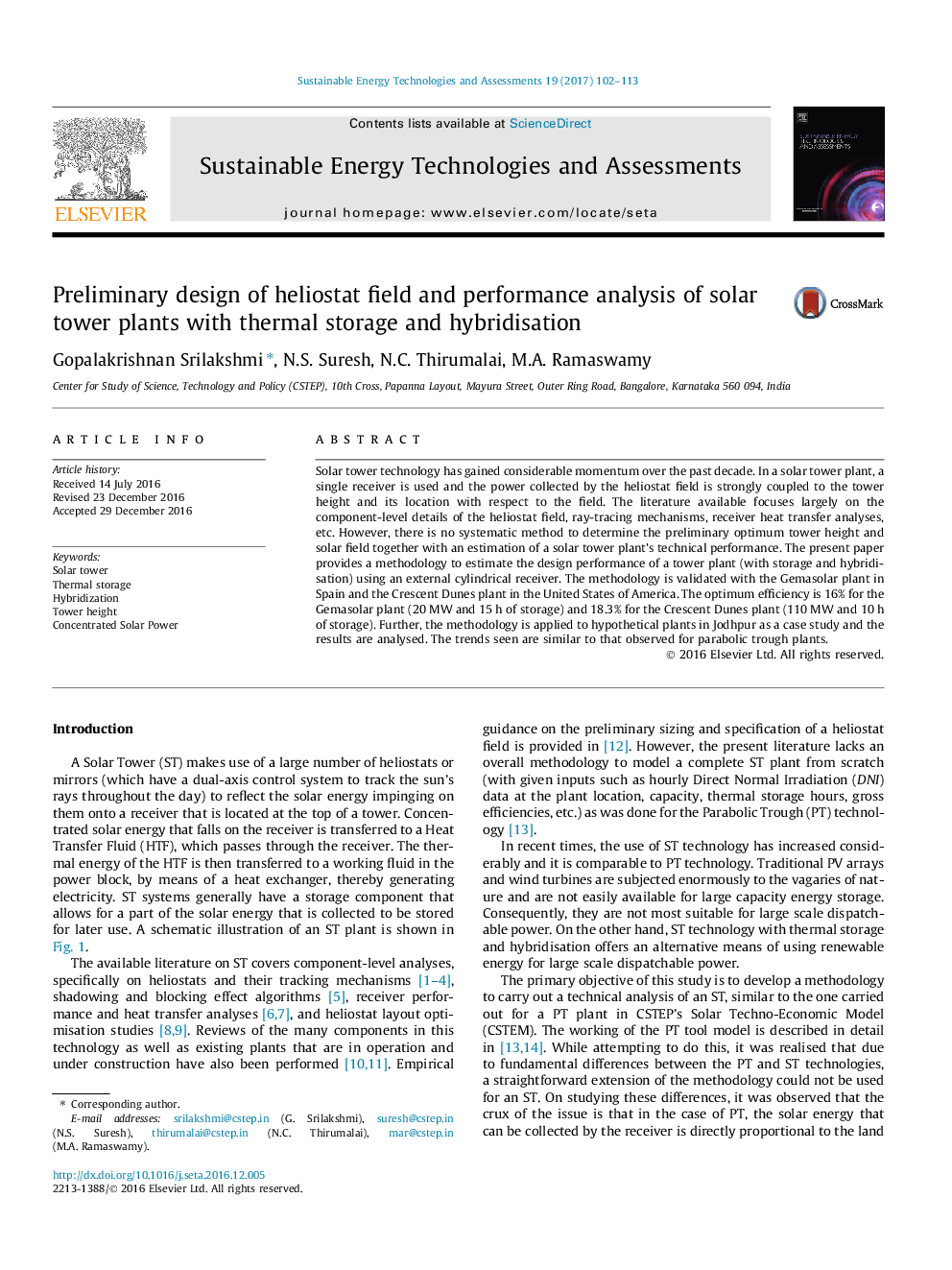| Article ID | Journal | Published Year | Pages | File Type |
|---|---|---|---|---|
| 5483510 | Sustainable Energy Technologies and Assessments | 2017 | 12 Pages |
Abstract
Solar tower technology has gained considerable momentum over the past decade. In a solar tower plant, a single receiver is used and the power collected by the heliostat field is strongly coupled to the tower height and its location with respect to the field. The literature available focuses largely on the component-level details of the heliostat field, ray-tracing mechanisms, receiver heat transfer analyses, etc. However, there is no systematic method to determine the preliminary optimum tower height and solar field together with an estimation of a solar tower plant's technical performance. The present paper provides a methodology to estimate the design performance of a tower plant (with storage and hybridisation) using an external cylindrical receiver. The methodology is validated with the Gemasolar plant in Spain and the Crescent Dunes plant in the United States of America. The optimum efficiency is 16% for the Gemasolar plant (20Â MW and 15Â h of storage) and 18.3% for the Crescent Dunes plant (110Â MW and 10Â h of storage). Further, the methodology is applied to hypothetical plants in Jodhpur as a case study and the results are analysed. The trends seen are similar to that observed for parabolic trough plants.
Related Topics
Physical Sciences and Engineering
Energy
Energy Engineering and Power Technology
Authors
Gopalakrishnan Srilakshmi, N.S. Suresh, N.C. Thirumalai, M.A. Ramaswamy,
